Young at heart
Staying healthy and active in our later years
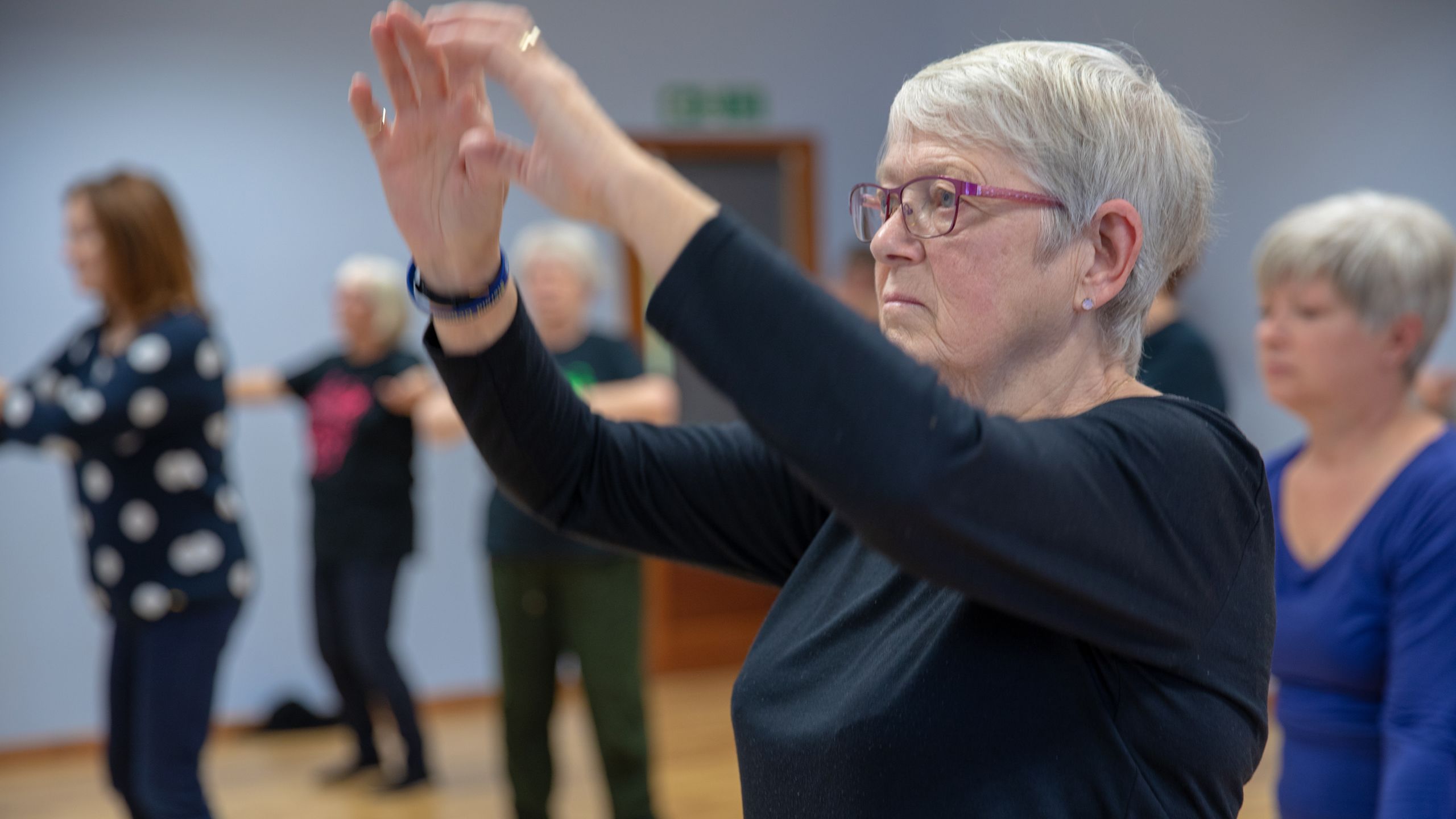
Improvements in public health, education and medicine mean that our lives are much longer than at any point in human history. Thanks to studies of volunteers from the eastern region, we may be able to spend these extra years living independently and in good health.
It’s 9:50am and a group of women are gathering upstairs at Burwell Sports Centre in Cambridgeshire. It’s a cold winter’s day and the chairs are scattered with thick coats and bags; the women are drinking tea, chatting, occasionally exploding into laughter. They’re here for the over-55s tai chi class.
“Initially I joined to meet people, but it’s good fun, we have a laugh,” says Pat, 73. She has asthma and has had joint replacements, so this gentle class is perfect for her. “It’s not a ̔difficult-difficultʼ class. It’s not like we’re doing press-ups or anything.”
Her friend Jane, 69, agrees. “It’s all exercise, but it’s also about getting out and socialising.”
Pat and Jane are among an estimated 12 million people aged over 65 living in the UK, a figure thatʼs expected to exceed 17 million by 2035, accounting for almost one in four people.
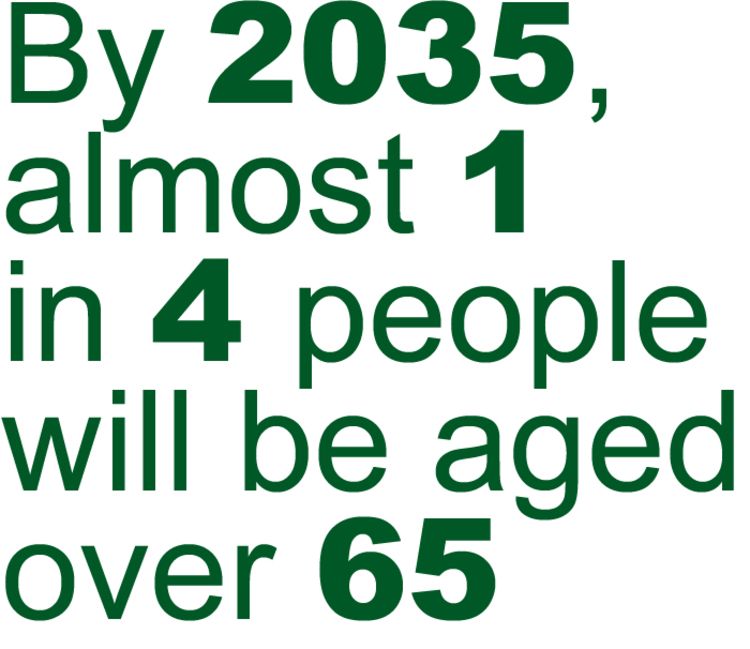
As we age, our bodies become weaker and more prone to disease: rates of diabetes, heart disease, cancer and dementia increase dramatically. Often an individual will be living with several conditions. This places an increasing burden on our health services, which have already been described as at “breaking point”.
What if we were able to live longer while still maintaining good health and our independence? This is the ambition of the ‘Ageing Society’ Grand Challenge, part of the UK government’s Industrial Strategy, which aims to “ensure that people can enjoy at least five extra healthy, independent years of life by 2035”.
Targeted screening

One approach to achieving the goal of the Grand Challenge is to encourage people to adopt healthier lifestyles – better diet, more exercise, keeping active in old age, as Pat and Jane do, for example – and thereby reduce their risk of disease. A second complementary approach is to identify those who are at highest risk of disease or have undiagnosed conditions and to intervene, through innovative diagnostic tools and treatments.
But how do we identify people who have undiagnosed conditions, particularly if they are yet to show symptoms. Could the answer lie in screening programmes?
Possibly, says Professor Simon Griffin at the Cambridge Institute of Public Health. “But,” he says, “while a minority of people will benefit from a screening programme, everyone may be harmed to some extent. There’s the anxiety that can accompany the test, the investigations that may be necessary to confirm a positive test, the diagnosis itself, the false reassurance of a negative test…”
To understand whether screening is worthwhile, he says, you need to demonstrate that early treatment is better than late treatment, and you need to quantify the associated harms. It turns out that few tests meet the criteria set down by the National Screening Committee when it is considering recommending the establishment of a programme.
“The belief that screening will reduce harm is widely held. But it’s almost folklore. Complex problems rarely have simple solutions.”
One way to reduce potential harms is to stratify people in terms of their risk profile and target screening at those with highest risk. Working with cohorts in Ely, in Cambridgeshire, and Norfolk, Griffin showed that it is possible to calculate an individual’s ‘risk scores’ for type 2 diabetes and cardiovascular disease based on factors such as age, weight and family history. Screening targeted at those with the highest scores is effective at identifying – and potentially preventing – new cases of diabetes and cardiovascular disease, with potential cost savings. These findings contributed to this approach being rolled out across the UK in the NHS Health Check programme.
Griffin is working with Professor Jonathan Mant to trial whether systematically screening people for atrial fibrillation – an irregular heartbeat – can cost-effectively identify those individuals who are affected. One in 10 people over the age of 65 will have this condition, which can be difficult to detect but is responsible for a third of all strokes and has been linked with an increased risk of heart attack and dementia.
The feasibility study is under way in the eastern region, with screening taking place at home: participants use a small, portable heart monitor twice a day to take recordings that are sent automatically for analysis.
Wearable technology

Helping people monitor their health at home could prove essential as our population ages, says Professor Chris Lowe, Director of the Cambridge Academy of Therapeutic Sciences. “It costs £700 to £800 a day to look after someone in hospital, so really you want to keep people in the home environment. That’s where technology will come into play.”
There is already a huge market for ‘wearable’ technology to monitor health, facilitated by the ubiquity of smartphones, the speed at which data is processed and, increasingly, advances in AI. Over 300,000 health-related mobile apps are now available, covering almost every conceivable condition.
“Algorithms – the computer code that powers AI – are getting better and more accurate, they still have some way to go before clinical decisions can be made on the basis of their measurements.”
“Tech companies might have to be willing to share the apps’ decision-making processes with regulators such as the National Institute for Health and Care Excellence, and there will need to be agreement about who is responsible in case of error or harm, or unexpected consequences. There might also be issues around take-up among the older generation, and questions of privacy around sharing personal health data.”
If we can overcome the barriers, the potential is huge, he says: gadgets to monitor heart rate, glucose levels and the amount of oxygen in our blood; gadgets to monitor an elderly parent remotely to ensure they don’t forget to take their medication and to watch out for – and even predict – falls. Augmented and virtual reality might help alleviate symptoms of dementia, depression or phobias.
Lowe and colleague Dr Gita Khalili Moghaddam, for instance, are working on a wearable technology for monitoring diabetes: contact lenses that monitor tear fluid as a surrogate for blood sugar. The lenses contain holographic sensors that change in response to glucose levels, the idea being that patients take a picture of the lens in situ to tell them how high their glucose levels are using a smartphone app.
Sense your life
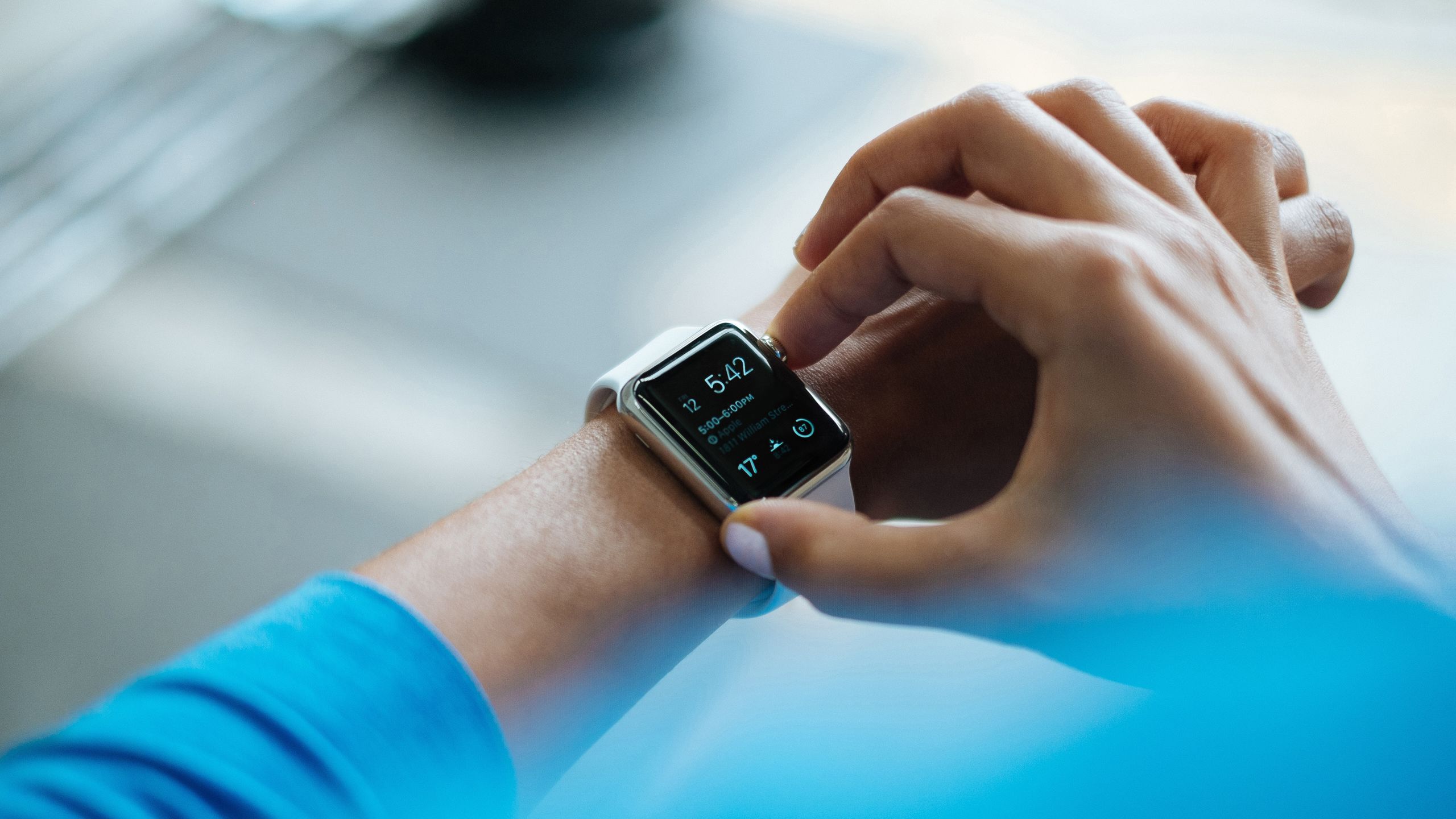
Computer scientist Professor Cecilia Mascolo, co-Director of Cambridge’s Centre for Mobile, Wearable Systems and Augmented Intelligence, in the Department of Computer Science and Technology, also sees technology playing an important role in monitoring disease. “[Wearable and mobile devices] are very powerful. They can really ‘sense your life’: your location, your activity, your emotions to an extent, your interactions… all of which could be really useful for clinical care.”
Mascolo is working with Dr Dennis Chan, a neuroscientist and consultant at Cambridge’s Addenbrooke’s Hospital, on apps that could help monitor the progression of dementia. One of these will look for changes in how we navigate around our environment, as problems with spatial navigation are among the first signs of dementia. Other apps will look for changes in sleeping patterns, or in memory and cognition.
There is a danger, however, that new technologies may further exacerbate inequalities between those who have access to them and those who do not. The government’s Grand Challenge acknowledges this problem, stressing the need to narrow “the gap between the experience of the richest and poorest”.
“Wearables tend to be used by highly educated, often very fitness-conscious, people,” says Lowe. “If we want everyone to benefit, then who will pay for those from low socioeconomic backgrounds to access this technology? Is the state going to pay? Like a lot of things they’ll slowly percolate down, but unless the government gives incentives, it will take a long time.”
Public health success

Professor Carol Brayne, Director of the Cambridge Institute of Public Health, welcomes the Grand Challenge as potentially offering a “win–win” situation to improve health in later life while helping stimulate the economy but, like her colleague Griffin, she warns against relying entirely on simple solutions to complex problems.
“Gadgets may play a part in improving an individual’s health and allowing them to age healthily, but we need to do research that looks at where gadgets, smartphones, and so on are the right approach, and where we really need to act as a household unit, or as a community, or as a society. There are no magic bullets.”
The Grand Challenge aims to help “drive improvements in public health and innovate across the social care sector”. This is welcome, says Brayne, though she argues that the investment in research and innovation should include investment into developing and evaluating public health measures, not just into technological solutions.
There are some grounds to be optimistic. Brayne leads the Cognitive Function and Ageing Studies (CFAS) project, a multi-centre study of dementia and cognitive decline in ageing. Volunteers from Ely have contributed to the study. More than 5,000 people aged 65 and over from the city and its surrounding area have taken part in cross-generational studies during the past three decades.
In fact, CFAS is one of a number of cohort studies at Cambridge University that look at populations in the East of England and ask what we can learn about the relationships between genetics, our behaviour, the environment and health. For instance, 30,000 men and women aged 40–79 have been involved in the EPIC Norfolk Study, while more than 12,000 people from Cambridgeshire have been involved in the Fenland Study.
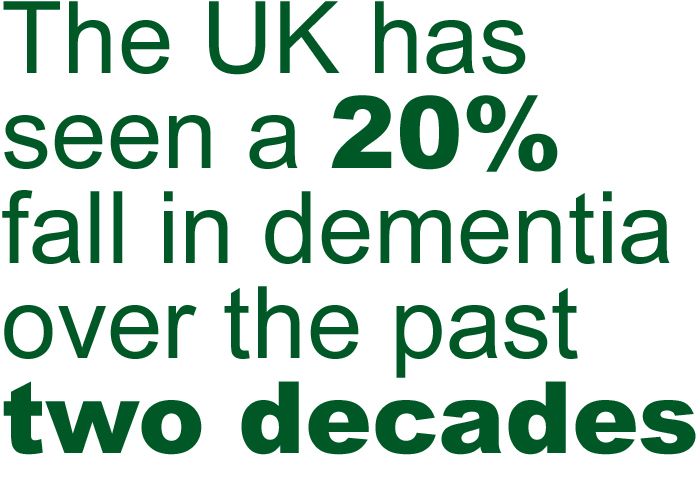
A key – and perhaps surprising – finding from CFAS was that the UK has seen a 20% fall in both the prevalence and incidence of dementia over the past two decades. When this finding was published, Brayne was quoted as saying: “The so-called dementia ‘tsunami’ is not an inevitability: we can help turn the tide if we take action now”.
The fall can almost certainly be viewed as a success for public health measures that improve education, early- and mid-life health promotion including smoking reduction and attention to diet, and physical activity. As well as reducing dementia risk, all of these factors contribute to healthy ageing.
“So much else goes along with brain health,” says Brayne. “Health of the body, disability… all of these things are tightly aligned. If you can do the things in society that enhance the potential for brain health in later life, you’re going to be doing a lot that’s good for every life stage.”
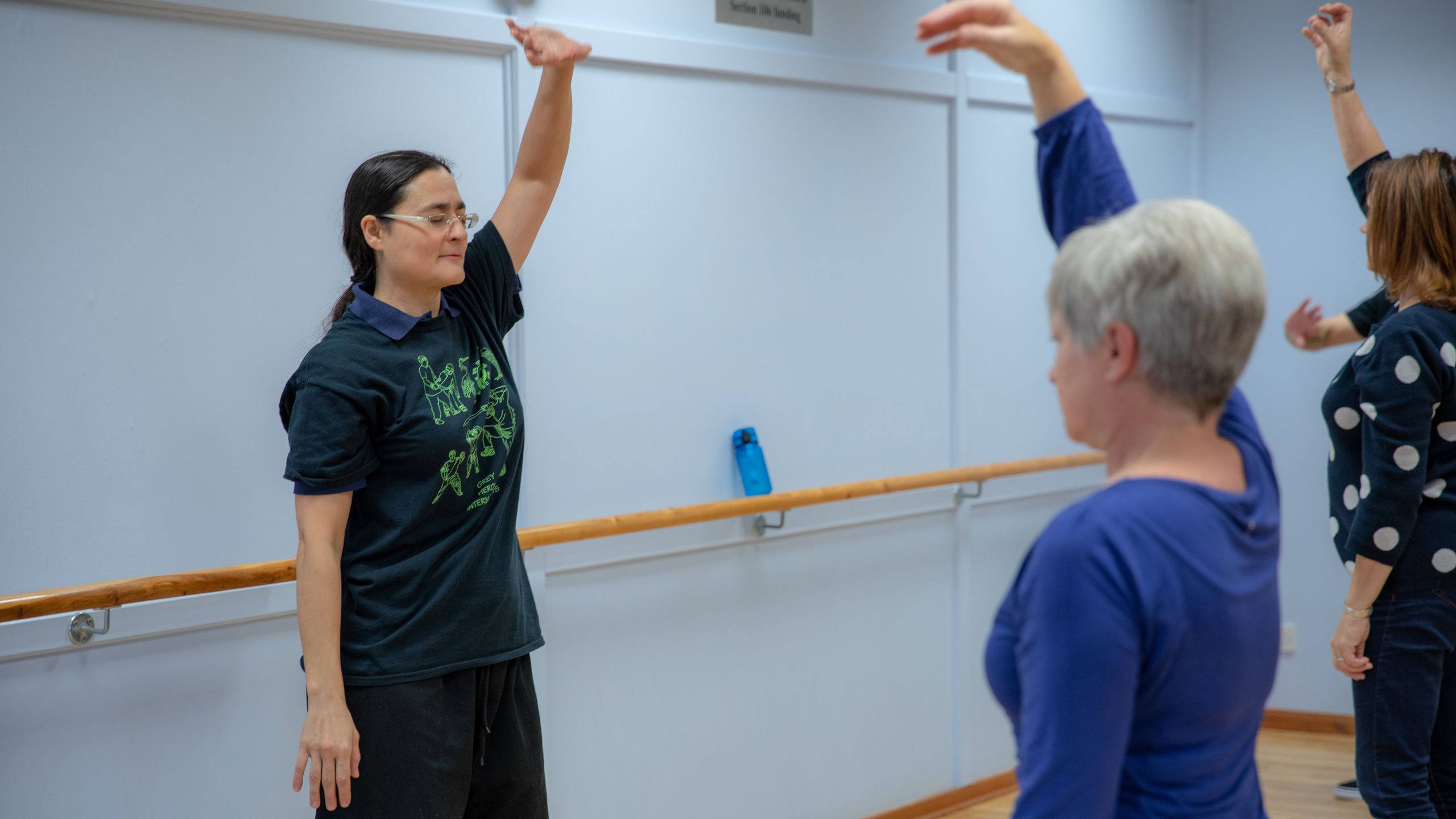
Instructor Fara Afifi (left) leading tai chi class
Instructor Fara Afifi (left) leading tai chi class
At Burwell, Fara Afifi, the tai chi instructor, begins gathering her class in the studio. The class is popular: there must be 20 people, mainly women. As they begin their warm-up, Pat puts down her tea and stands to join them.
“It’s not a serious class, ‘cos we’re all slightly older,” she says, laughing. “I tried that Zumba once, and I could barely get home!”
Read more about Cambridge University research in the East of England in a special issue of Research Horizons magazine.
Images
Tai chi images by Lloyd Mann
Atrial fibriliation - CardioNetworks
Matrix data - geralt (Pixabay)
Smart watch - Free Photos (Pixabay)
Couple walking - MabelAmber (Pixabay)

